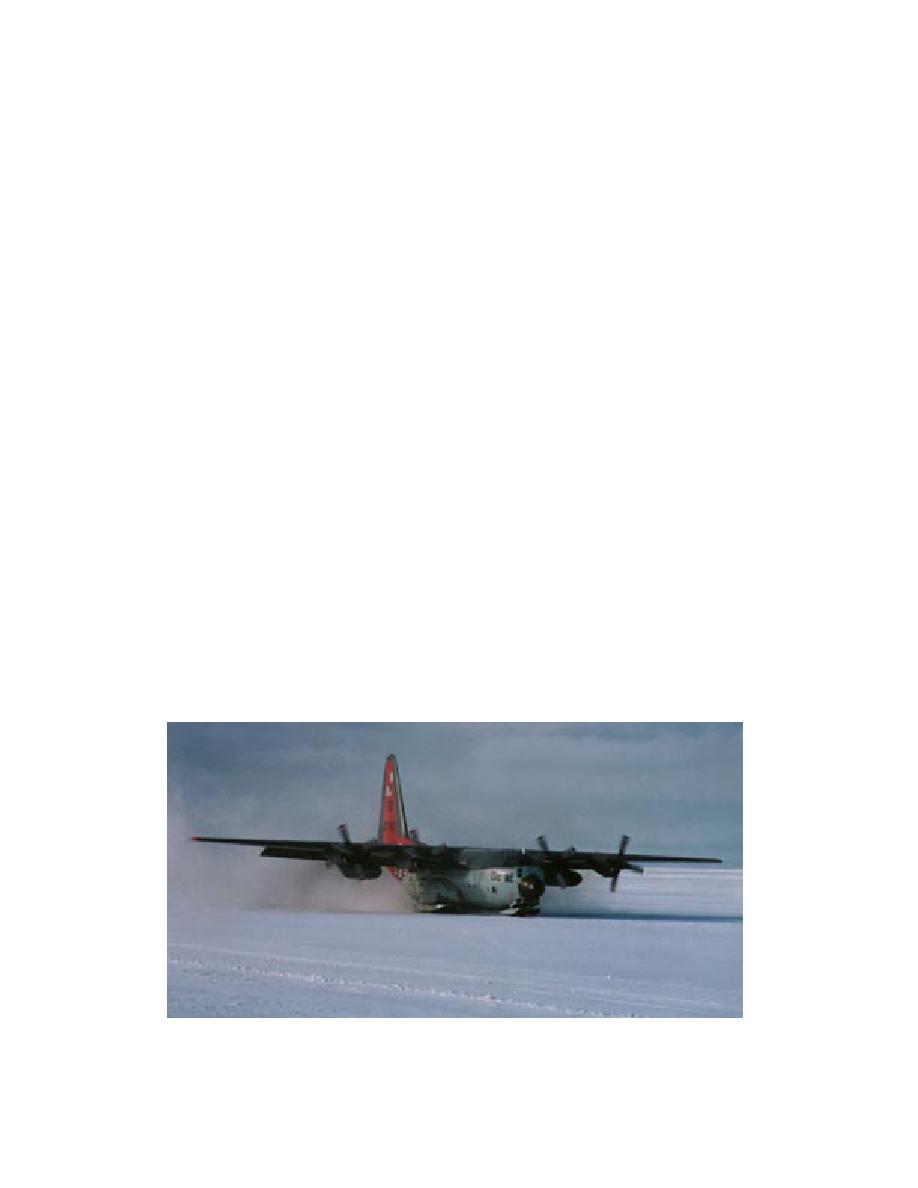
way is also advantageous. This allowed them to
flight aircraft should be of a type that allows con-
have a full understanding of what took place to
fident extrapolation of results to the aircraft that
reach the point of calling for a flight test. Further,
will ultimately use the runway (i.e., don't use a
they had the opportunity to ask questions and to
Twin Otter to check for the suitability of the run-
bring up issues important to their role in the de-
way for a C-141).
velopment.
A weather observer, trained in aviation meteo-
A number of goals are associated with flight
rology, should be on site to monitor winds and
tests. For the flight crew, it will be an opportunity
visibility before the test aircraft taking off from its
to establish approach and takeoff navigation in-
base of operation. The observer should establish
formation, to become accustom to the "look" of
the weather trend at the site and make frequent
the runway, and to determine any vagaries of the
reports (hourly) to the flight crew to ensure that
glide slope. While on the runway, the aircraft
they are fully informed on conditions at the run-
should test high-speed smoothness, braking ac-
way. The observer must remain on site, making
tion, ability to make sharp turns, and visibility
measurements and communicating with the flight
(surface definition and "dust" blowup). A conser-
crew from the time the aircraft reaches its in-
vative set of flight tests might include 1) a touch-
bound point of safe return (PSR) until it passes
and-go landing, 2) a "no-brakes" (coast down)
PSR on the outbound flight.
landing, 3) a slow speed taxi for the length of the
For the test flight, crash/fire/rescue resources
runway, 4) high-speed taxi, 5) hard braking test
should be on hand, just as would normally be
from high speed and 6) normal takeoff, perhaps
present at any airport. In addition, some aircraft
from each direction on the runway. We recom-
maintenance capability and fuel on site may be a
mend that the first flight tests be performed with
good precaution.
an empty aircraft, a polar-experienced crew and
The first flight should never be a test of the
perhaps a member of the construction team, most
ability of the runway to support the aircraft load.
desirably the field engineer. If polar crews are not
Full-scale tests must be adequate to leave no doubt
available, a minimum requirement is that the crew
in anyone's mind that the runway will easily sup-
have rough-field experience and they be extremely
port the design aircraft. This will be known to all
familiar with the type of aircraft being flown. In
involved parties, but it would be wise to ensure
most situations, the aircraft used for the flight test
that anyone who has not participated in the pro-
should be of the type that will be the primary user
cess of development (e.g., journalists, public rela-
of the runway. However, it is possible, and some-
tions people, visitors, camp workers) also
times prudent, to use a robust, but less valuable,
understands that the question of the bearing
aircraft to establish the pertinent characteristics
strength of the runway has already been answered.
of the runway. If this option is chosen, the test
Following the flight test, the pilot should brief
Figure 65. LC-130 operating on wheels during runway testing of Pegasus in February 1993.
62



 Previous Page
Previous Page
